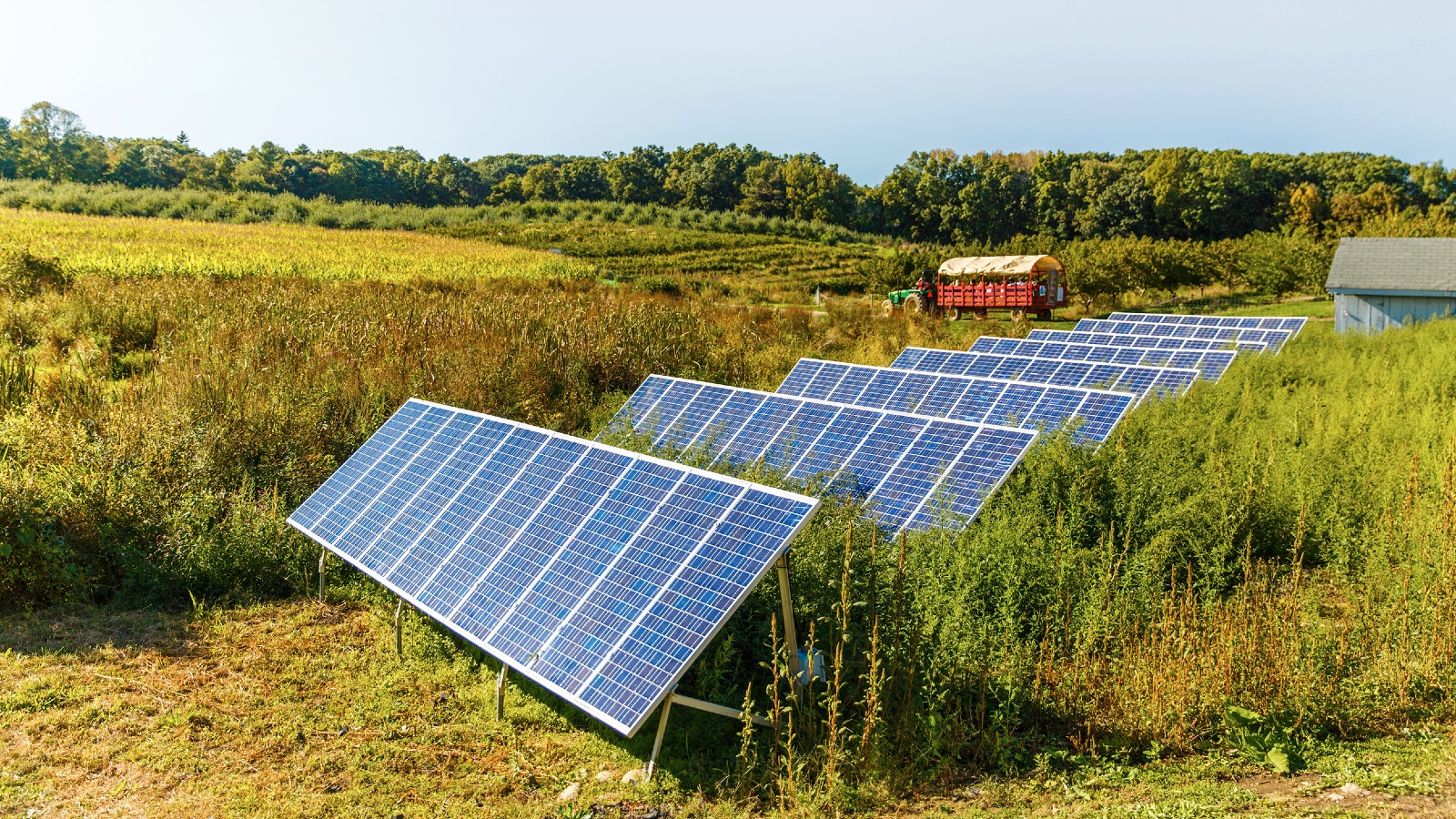Environmental groups have been clamoring for Congress to make this year’s farm bill the next big climate law. With more funding, climate advocates say, farmers could cut greenhouse gas emissions by storing carbon in soil, curbing nitrogen fertilizer use, and planting trees. But the farm bill — and the movement to make it climate-friendly — isn’t just about farming. It also pumps tens of millions of dollars each year into clean energy projects: solar panels on a poultry and cattle farm in Georgia; an energy-efficient refrigerator at a grocery store in South Dakota; a wind turbine in Minnesota.
The source of those funds, the farm bill’s Rural Energy for America Program, “helps to reduce input costs for farmers, to cut their energy costs, and to lower their carbon footprints,” said Andy Olsen, senior policy advocate at the Environmental Law and Policy Center.
That program, which is voluntary for farmers and rural small business owners, was supposed to get an additional $2 billion through the Inflation Reduction Act. Now, it’s being targeted by House Republicans looking for spending cuts. They’ve proposed clawing back half a billion dollars meant for the program — along with $3 billion for renewable energy projects run by rural electric cooperatives, and eliminating funding for the Department of Agriculture’s climate research. The cuts, proposed separately from the deal that House Republicans and the White House reached on the debt limit, are sure to encounter resistance if they make it through the House of Representatives and get sent to the Democrat-led Senate. But the development signals that turning this year’s farm bill into a historic climate law might be harder than advocates have hoped. And it has put a bullseye on a rural energy program that had, until recently, a history of bipartisan support.
“We want to see Congress reject any cuts to this program,” said Alexander Ratner, federal policy manager at the American Council for an Energy-Efficient Economy. “It’s our view that they would hurt communities that really need this funding. They would hurt farmers. They would hurt ranchers. They would hurt rural small businesses.”
The rural energy program was established in the 2002 Farm Bill, signed into law by President George W. Bush, and gets about $50 million each year. When Congress passed the Inflation Reduction Act last August, Olsen considered it a “watershed event” for rural renewable energy and climate-friendly agriculture. Agriculture accounts for 10 percent of the country’s greenhouse gas emissions, and the landmark bill aimed to encourage farmers to adopt “climate-smart” practices, including $2 billion for the rural energy program, $20 billion for four USDA conservation programs, and $11 billion for renewable power through rural electric cooperatives. “We’re staring down the barrel of a 1.5 degree centigrade increase, so we’ve got to get moving on clean tech ASAP,” Olsen said, noting that as renewables have gotten cheaper, more farmers have turned to the Rural Energy for America Program to help switch to wind and solar.
Not all the Inflation Reduction Act funding was guaranteed. As climate advocates have lobbied Congress to dole out cash to climate-conscious farmers, they’ve also been worried that Republican lawmakers would siphon off some of the billions earmarked in the Inflation Reduction Act. And that’s exactly what Republicans on the House agriculture appropriations subcommittee suggested doing on May 18, when they recommended big cuts to the USDA’s discretionary funding.
“This legislation rejects the Biden administration’s unrealistic proposed spending levels that are detached from the dire fiscal reality our country faces,” said Representative Andy Harris, a Republican from Maryland who chairs the subcommittee.
After the spending bill cleared the House subcommittee on party lines, Department of Agriculture Secretary Tom Vilsack reportedly said it “is pathetic, it is punitive, and it is petty.” The bill would restrict the department’s access to a $30 billion reserve that it has used to pay for climate-smart initiatives, like technical assistance for farmers who want to reduce greenhouse gas emissions and pilot programs for monitoring carbon and methane pollution.
“We’re not liking what we see in the appropriations bill,” said Cathy Day, climate policy coordinator at the National Sustainable Agriculture Coalition. “It doesn’t make a whole lot of sense except for scoring political points.”
Climate advocates meanwhile had been celebrating a $11 billion federal infusion into rural renewable energy projects, with money from the Inflation Reduction Act. Vilsack heralded it as the biggest investment in rural electrification since the New Deal. “This is an exciting and historic day,” Vilsack proclaimed on May 16 — a day before House Republicans proposed the $4 billion raid on clean energy funds.




